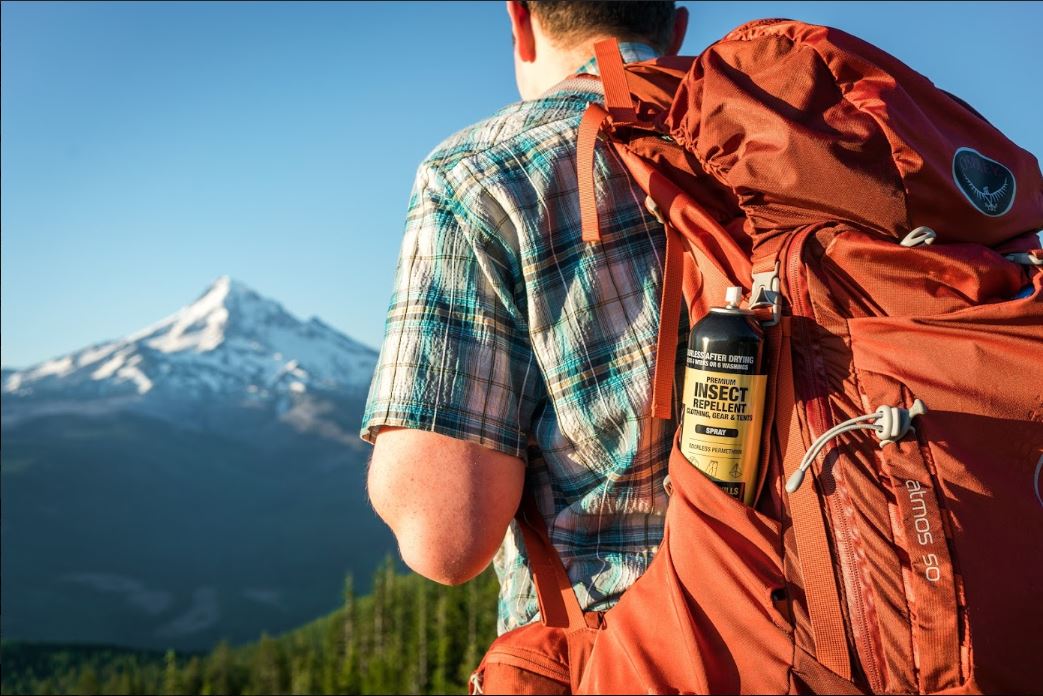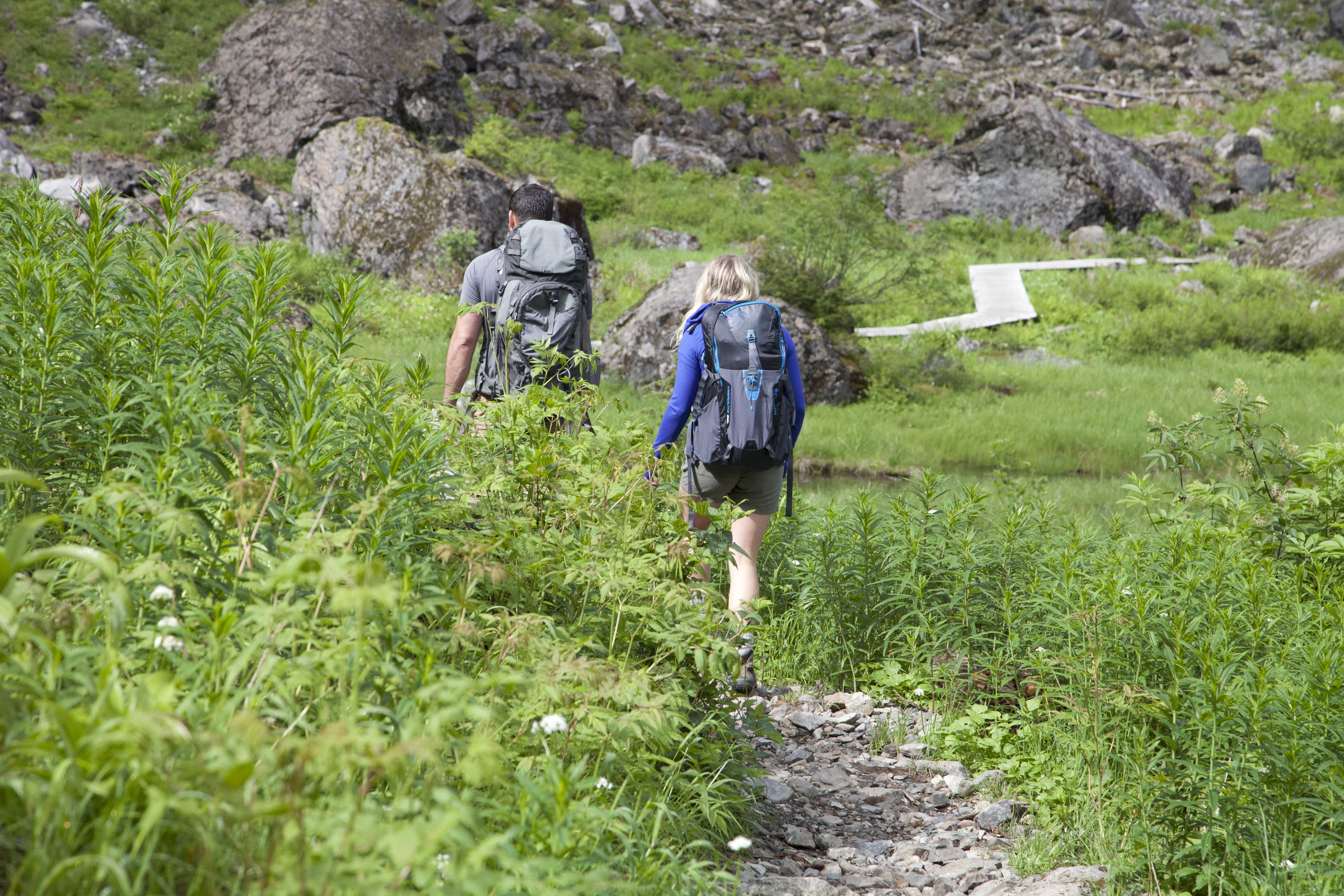5 Effective steps to prevent Lyme Disease while outdoors
 Summer’s here and that means longer days and better weather for outdoorsy play, and hiking is just one of the many activities that draws people out to enjoy all that nature has to offer. However, if one of your fears is that your dog or child will pick up a tick, you’re not alone -- but you don’t have to let that stop you from enjoying the outdoors. If you’ve been hiking as long as I have, you’ve most likely encountered a tick.
Summer’s here and that means longer days and better weather for outdoorsy play, and hiking is just one of the many activities that draws people out to enjoy all that nature has to offer. However, if one of your fears is that your dog or child will pick up a tick, you’re not alone -- but you don’t have to let that stop you from enjoying the outdoors. If you’ve been hiking as long as I have, you’ve most likely encountered a tick.
I remember the first time my childhood dog came home from one of our hikes with a tick and my parents had to show me how to remove it. Luckily, I’ve learned tips on how to prevent ticks (and Lyme disease) since then! Tick bites can carry extremely serious and lead to potentially deadly diseases like Lyme disease, which is transmitted to humans through the bite of infected ticks. The worst part is that ticks could be anywhere from your backyard to the backcountry. There are more than 200,000 cases per year in the United States and the disease is caused by the bacterium Borrelia burgdorferi.
Typical symptoms include fever, headache, fatigue and a skin rash. Lyme disease can later potentially lead to arthritis and neurological or cardiac disorder. So, how do you protect yourself from getting ticks?
Here are five ways you can help prevent bringing a tick or two home from the trail:
1. Treat your clothes
If you’re headed out for a hike, remember to treat your clothes and gear with a chemical repellent that contains permethrin, picaridin or DEET. One of the best repellents out there is the Sawyer Permethrin, which you should use prior to your backcountry adventures. Permethrin is a fabric insect repellent treatment with a chemical make-up similar to the organic compounds produced by Chrysanthemum-like flowers. Apply Permethrin to your clothing, gear and other fabrics, and once the insect repellent has completely dried and bonded with the fabric fibers, it will last for up to six weeks or six washes.
Permethrin can be used on gear such as backpacks, tents, mosquito netting, etc. In addition to clothing and gear, you can also treat your dog directly to protect him while on trail. Visit Sawyer.com/dogs to see the full application instructions and video. Another option is Picaridin Insect Repellent. It offers up to 12 hours of protection and is highly effective at deterring a wide array of insects, including mosquitoes and ticks. It has a pleasant low citrus odor and won’t damage plastics or synthetic coatings. And because DEET can be harmful if it is misused and it is recommended to only use products with 30% DEET or less, Sawyer offers a 20% DEET that is safer for the whole family. DEET, or diethyltoluamide, is the most common active ingredient in insect repellents. It protects not by killing ticks or other insects but by preventing them from landing on your or your dog’s skin or clothing in the first place.
2. Wear dark clothing
Choose dark, protective clothing. While ticks are more visible and easier to detect on light clothing, ticks are up to 20% more likely to be attracted to light-colored clothing according to a study conducted by Berglund J. Stjernberg.
3. Cover your legs
Always tuck your pant legs into socks or wear gaiters. Gaiters are a great way to prevent ticks and other bugs from getting on to your skin. Since your legs are closer to brush during your outdoor adventures, your ankles and legs are a very common spot to pick up ticks.
4. Beware where you step
Avoid tick-infested areas. Common places to find ticks are in thick brush and grass, especially on hot, humid days. You can also easily pick up a tick when placing your backpack on the ground -- even during a quick break. Besides protecting the environment, another reason to set up your camp on top of a flat rock or deserted dirt area is to avoid ticks. If you set up camp in grass or brush areas, you might be inviting ticks into your outdoor home. Be careful while hiking and prevent ticks by taking breaks and breaking camp in open areas. 
5. Check yourself
Make sure you constantly check yourself, your children and your pets for ticks. It’s especially important to check your dog after a walk or hike for ticks to not only protect your dog, but also not allow a tick to invade your home. You’ll need to carefully remove any ticks ASAP with tweezers if you find the invaders. The most important thing to do if you spot a tick is to stay calm. Read this article for more information on Lyme Disease and learn how you can protect yourself, your family and your pets against ticks. You’ve got this. What are some ways you protect yourself from ticks when you're on trail? We'd love to hear them in the comments below.
Read more:
- A "ticky" situation -- Tips for preventing and removing ticks when on trail
- Tick prevention in colder months
This post is sponsored by Sawyer. Photos courtesy of Sawyer.
 For over 30 years, Sawyer Products has been dedicated to offering more effective and reliable products for outdoor protection. Using science and rigorous testing, Sawyer has developed the most advanced and easy-to-use solutions in water treatment, insect repellent, sunscreen, and first aid. Learn more about how Sawyer is driving innovation to keep you safer and how it's using products to save lives internationally.
For over 30 years, Sawyer Products has been dedicated to offering more effective and reliable products for outdoor protection. Using science and rigorous testing, Sawyer has developed the most advanced and easy-to-use solutions in water treatment, insect repellent, sunscreen, and first aid. Learn more about how Sawyer is driving innovation to keep you safer and how it's using products to save lives internationally.
ABOUT OUTGROWN
OutGrown is a 501(c)(3) nonprofit that works to create a world where everyone can enjoy the physical and mental benefits of spending time outside. We are focused on creating opportunities and removing barriers to access so families with babies and young children can take their first steps outside. We believe all families have the right to connect with nature, benefit from spending time outdoors and be inspired to a lifelong love of nature. Since its grassroots inception in 2013, OutGrown is a growing community of 280,000 families and over 300 volunteer Branch Ambassadors. More information on all of our programs can be found at WeAreOutGrown.org
EDITORS NOTE:
We hope you enjoyed reading this article from OutGrown. We’re working hard to provide our community with content and resources that inform, inspire, and entertain you.
But content is not free. It’s built on the hard work and dedication of writers, editors, and volunteers. We make an investment in developing premium content to make it easier for families with young children to connect with nature and each other. We do not ask this lightly, but if you can, please make a contribution and help us extend our reach.
Related Content




Comments